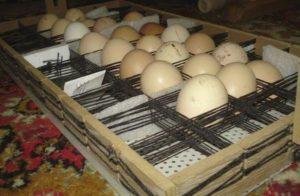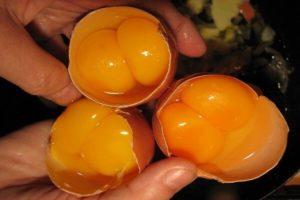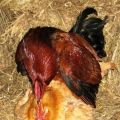How many chickens do you need per rooster for fertilization
Homemade chicken provides quality egg and meat products. The female copes with this task perfectly herself, without the participation of the male. The rooster is only needed to hatch the chicks, because without it, the eggs will remain unfertilized. Therefore, if there is a chicken coop on the farm, it is worth finding out the main functions of the male in the poultry community, as well as how many chickens are needed for one rooster.
Does a chicken need a rooster?
First you need to decide on the purpose of keeping poultry. In literary sources, there is no verified evidence that the number of eggs laid will depend on the presence of a rooster.
Swarms have a natural ability to produce eggs on their own without involving a male. Biologically, the egg matures and forms on its own.
The male is required for fertilization when planning hatching. If there is interest in raising the young generation, then you cannot do without a rooster, since the chicken without it will reproduce unfertilized eggs that are not suitable for incubation.
Even a new modern artificial hatchery does not promote the emergence of chicks.
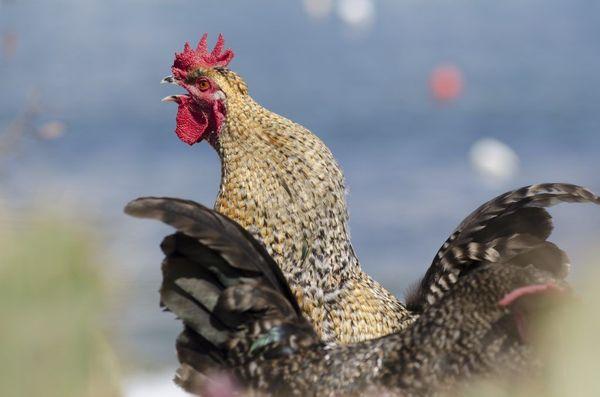
In addition to biological functions, the rooster also has some social responsibilities in the avian society. Thanks to the male, complete order is ensured in the hen house, the schedule is controlled so that each resident wakes up on time, falls asleep and does not forget to eat and rush at the same time. The head of the family prevents quarrels and fights that often arise between quots, interceding and protecting weak representatives.
In the case of grazing in an open area, the rooster, as the leader of the flock, is responsible for each resident of the chicken coop. The male can intuitively sense the threat, his duty is to give a signal to the charges so that they can get to a safe place. When a predator attacks, he fights with him, not retreating, to the last. It turns out that his own safety means nothing to him when the life of an entire pen is at stake.
The appearance of a rooster can provoke the development of various incidents. Some females, with the arrival of a male in the flock, stop giving egg products and begin to actively look for a place to place a nest. Their actions interfere with the rest of the inhabitants of the hen house, against the background of which numerous conflicts arise.
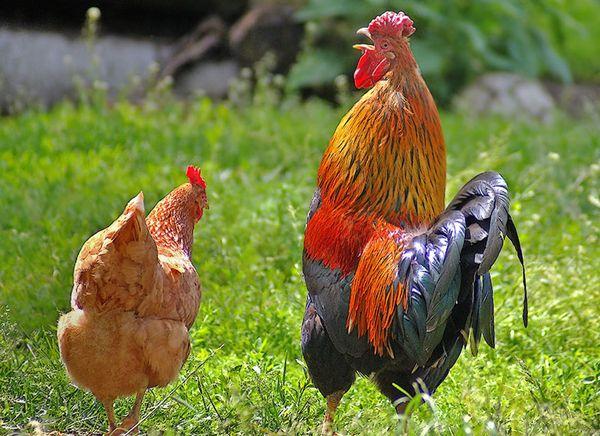
Also, the presence of a male can negatively affect the appearance of the layers, since they subsequently receive numerous injuries after frequent mating.
It is worth considering that after the appearance of the rooster, the number of eggs will significantly decrease, due to the fact that they will go for hatching chickens. As soon as the female begins to incubate, the male begins to practice singing and does not allow all the inhabitants here to sleep in the morning. Feeding poultry can take place with some complications, since the rooster becomes hostile even to the owner, attacking him when he tries to enter his territory.
Selection rules
When choosing a rooster, the first step is to make sure it is healthy and productive. Signs of sexual dimorphism and other external features of a healthy representative should be clearly visible:
- well developed bright red crest,
- straight legs, regular toes;
- spurs or bumps.
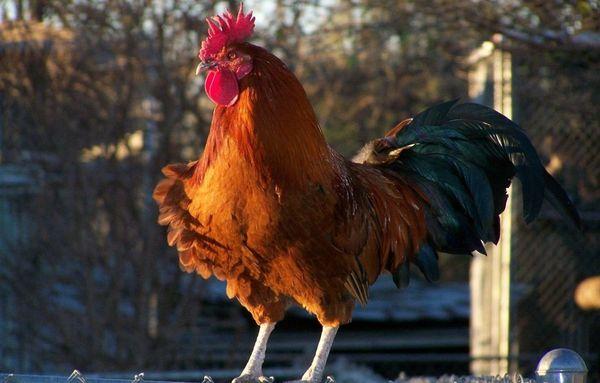
Already at the age of 5-6 months, the rooster has a characteristic appearance, individual behavioral traits and temperament. When choosing, you need to give preference to a male representative with character traits such as activity and cockiness. He should feel like the owner, be responsible for the safety in the poultry yard and not be afraid to get into a fight if necessary. You should not choose a male attacking people, he can injure a child and an adult.
But there should be no hostility towards the hens, its main task is to protect and take care of the inhabitants of the hen house. This shows the feeding period: a good rooster will not climb first to the feed, but will protect the chickens when eating and drive away intruders.
How many chickens per rooster
The number of chickens per rooster varies according to the variety and breed of poultry.
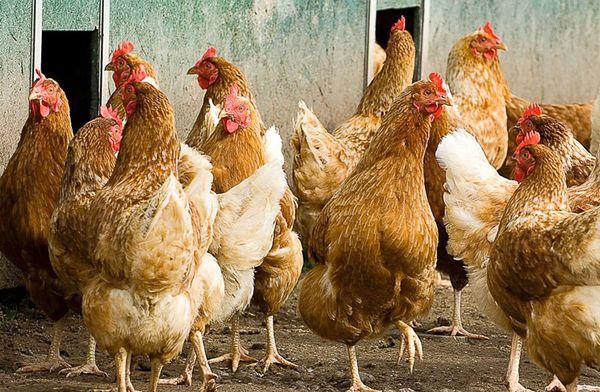
For meat breeds
Meat and fighting breeds require more attention, therefore, according to statistics, only 8 pairs are needed for 1 rooster. Since this type of chickens is distinguished by its high weight and low mobility. Due to the low activity rate, many chickens may remain unfertilized.
For egg-laying hens
For all eggs to be 100% fertilized, you need 1 rooster per 10 egg-laying hens. This is the best option for the continuation of offspring. When the indicator increases from 10 to 20 hens, many eggs will remain unfertilized.
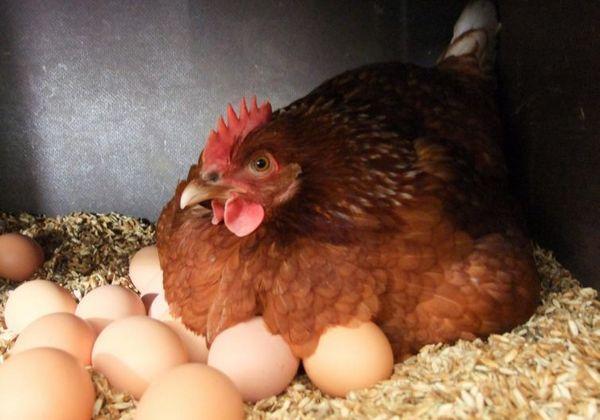
Keeping two or more males together in a herd
Keeping 3 or more males together in one hen house can lead to unforeseen situations. Constant competition, fights, squabbles have a bad effect on the life of the entire bird community. It should be limited to 2 males.
The age of the rooster is of great importance for hens. The young male practically does not pay attention to the females, and if there are 2 immature representatives in the flock, then no chickens are expected at first. It will be most beneficial to keep 2 males, selected in such a way that one of them is young and the other is older.
Important! In one chicken coop there can be 2 males only if they grew up together, then they will be peaceful, get along quickly and will not conflict. The main thing is to choose the right breed, otherwise crossing will not show good results.
What if the roosters fight?
Fights in the chicken coop cause a lot of problems for the owner, hens begin to get nervous, and the number of eggs decreases. To avoid such situations, you need to accurately calculate and leave the minimum number of males.
It is necessary to exclude replantings, the appearance of a newcomer can disrupt the formed system in the avian society and provoke a conflict.

As a last resort, you need to divide the aviary so that each formed group has its own territory for a walk, feeders and drinkers. You can install an inclined ladder in the center of the chicken coop. Thanks to her, weak representatives during a fight can avoid severe injuries by climbing up.
Why change a rooster?
Over time, the male ceases to cope with his main duties and is no longer useful. Passivity and carelessness appear in his behavior. Unfortunately, 3-4 years old is considered quite impressive. In this case, it is worth changing the old representative for a younger and more active rooster. He will fertilize chickens with high quality and guard the flock.
The replacement must be suitable, so there should be several candidates in the household. The hatched chicks grow over time, and then it becomes clear which of them is who.
Young males can behave aggressively, start a fight for no reason, but there are those who do not want to be in the spotlight and try to stay in the background. Naturally, neither the first nor the second contender for the role of the head of the family is suitable.
A young rooster should be active during the feeding period, not start fights, but be able to stand up for himself. If the inhabitants of the hen house in their presence are also calm and balanced, then these are the best candidates for the post of leader of the pack.
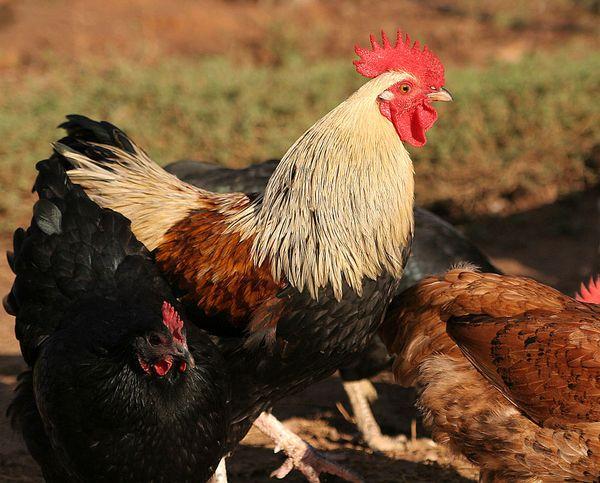
It is worth resorting to choosing a male from another flock with which the hens have not yet interbred. This will help to avoid in the future the appearance of various genetic diseases and the reproduction of weak offspring.
What will happen if the norm is not followed?
Due to the large number of males in the flock, constant competition arises, against the background of which conflicts and fights occur. Also, males need to fulfill their biological needs, which can lead to the fact that laying hens will lose their visual appeal, become nondescript and shabby. Due to frequent skin lesions and injuries, the female runs the risk of contracting an infectious disease.
When there is only 1 rooster in a large flock, empty, unfertilized eggs will periodically appear, from which a chick will never hatch. For the purpose of breeding poultry, it is worth having at least 2 roosters per chicken coop.
Having dealt with the intricacies of choosing a male who will be a reliable leader of the flock, father and protector, as well as familiarizing yourself with how many chickens are needed for one rooster, you can confidently start breeding young offspring without fear and risk.
